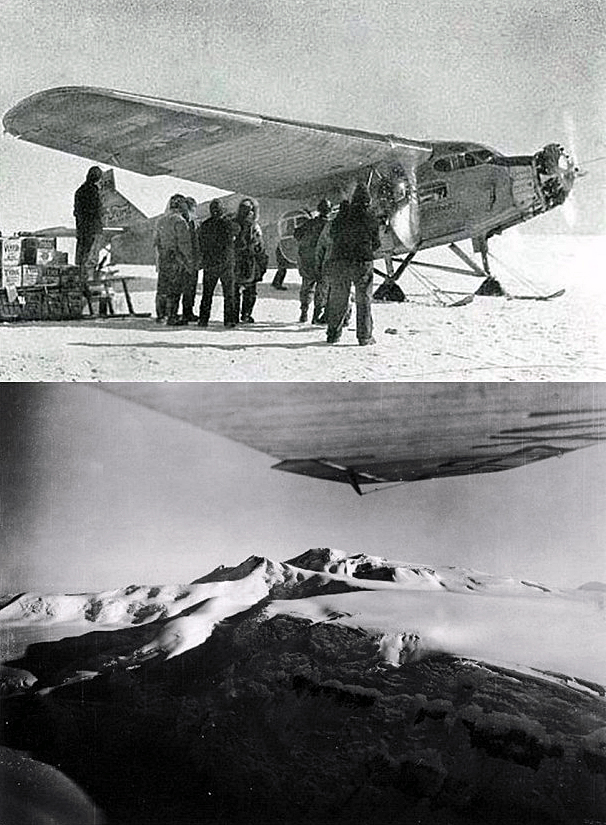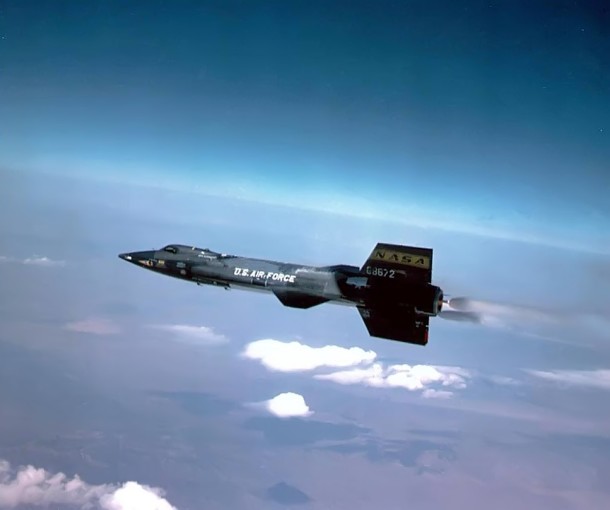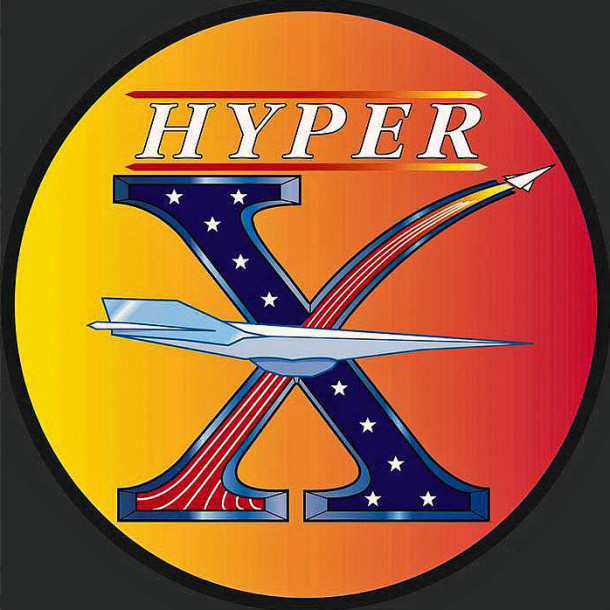
Ninety years ago to the day, a four-man crew became the first Antarctic explorers to fly over the Earth’s South Pole. The aircraft used to make the historic flight was a Ford Trimotor.
While substantial exploration of the Arctic and Antarctic by land and sea had occurred far earlier, exploration of these regions by air was in its infancy during the decade of the 1920′s. Of particular focus was the goal to fly over both the North and South Poles.
The historic first flight to the South Pole originated from Little America, an exploration base camp situated on Antarctica’s Ross Ice Shelf. Distance to the South Pole was about 800 miles as the crow flies.
A Ford Trimotor aircraft, the Floyd Bennett (S/N NX4542), was selected for the epic polar air journey. The crew consisted of pilot Bernt Balchen, co-pilot Harold June, navigator Richard E. Byrd, and radio operator Ashley McKinley.
The fabled Trimotor was well-suited for the rigors of polar flight. The all-metal aircraft measured 50-feet in length and had a wing span of 76-feet. Empty weight was roughly 6,500 pounds. Power was provided by a single 520-HP Wright Cylone and a pair of 200-HP Wright Whirlwind radial engines.
Following departure from Little America at 02:39 UTC, the Floyd Bennett headed for the South Pole. Navigation was via sun compass due to the proximity of the South Magnetic Pole.
Myriad glaciers, massifs, plateaus, and crevasses marked the stark, rugged landscape unfolding under the Floyd Bennett’s flight path. The most imposing of these geological features were the Queen Maud Mountains that towered more than 11,000 feet above sea level.
Pilot Balchen struggled to get his aircraft over the high mountain pass that runs between Mounts Fridtjof and Fisher. The crew jettisoned empty fuel cans and hundreds of pounds of precious food to lighten the load. The Floyd Bennett cleared the terrain by about 600 feet.
Just after 1200 UTC (local midnight) on Friday, 29 November 1929, the Floyd Bennett and her crew flew over the Earth’s South Pole. After briefly loitering around the Pole, the aircraft headed back to Little America at 1225 UTC.
According to plan, Balchen landed the airplane to take on 200 gallons of fuel that had been pre-positioned at the base of the Liv Glacier. The Floyd Bennett took-off again and landed back at Little America around 21:10 UTC. Total mission time was nearly 19 hours.
United States Navy Commander Richard E. Byrd now had flown over both poles. He would go on to successfully explore the Antarctic for many more years. For his part in the South Pole overflight, Byrd was promoted to the rank of Rear Admiral.
Today, the aircraft that made the first flight over the South Pole in November 1929 is displayed in the Heroes of the Sky exhibit at the Henry Ford Museum in Dearborn, Michigan.

Fifty-two years ago this month, the No. 3 USAF/North American X-15 research aircraft broke-up during a steep dive from an apogee of 266,000 feet. The pilot, USAF Major Michael J. Adams, perished when his aircraft was ripped apart by aerodynamic forces as it passed through 65,000 feet at more than 2,500 mph.
The hypersonic X-15 was arguably the most productive X-Plane of all time. Between 1959 and 1968, a trio of X-15 aircraft were flown by a dozen pilots for a total of 199 official flight research missions. Along the way, the fabled X-15 established manned aircraft records for speed (4,534 mph; Mach 6.72) and altitude (354,200 feet).
The X-15 was a rocket, aircraft and spacecraft all rolled into one. Burning anhydrous ammonia and liquid oxygen, its XLR-99 rocket engine generated 57,000 lbs of sea level thrust. Reaction controls were required for flight in vacuum. Each flight also required careful management of aircraft energy state to ensure a successful, one attempt only, unpowered landing.
On Wednesday, 15 November 1967, the No. 3 X-15 (S/N 56-6672) made the 191st flight of the X-15 Program. In the cockpit was USAF Major Michael J. Adams making his 7th flight in the X-15. He had been flying the aircraft since October of 1966. Like all X-15 pilots, he was a skilled, accomplished test pilot used to dealing with the demands and high risk of flight research work.
X-15 Ship No. 3 was launched from its B-52B (S/N 52-0008) mothership over Nevada’s Delamar Dry Lake at 18:30 UTC. As the X-15 fell away from the launch aircraft at Mach 0.82 and 45,000 feet, Adams fired the XLR-99 and started uphill along a trajectory that was supposed to top-out around 250,000 feet. If all went well, Adams would land on Rogers Dry Lake at Edwards Air Force Base in California roughly 10 minutes later.
Around 85,000 on the way upstairs, Adams became distracted when an electrical disturbance from an onboard flight experiment adversely affected the X-15’s flight control system, flight computer and inertial reference system. As a result, data on several key cockpit displays became corrupted. Though with some difficulty, Adams pressed-on with the flight which peaked-out around 266,000 feet approximately three (3) minutes from launch.
As a result of degraded flight systems and perhaps disoriented by vertigo, Mike Adams soon discovered that his aircraft was veering from the intended heading. He indicated to the control room at Edwards that his steed was not controlling correctly. Passing through 230,000 feet, Adams cryptically radioed that he was in a Mach 5 spin. Mission control was stunned. There was nothing in the X-15 flight manual that even addressed such a possibility.
Incredibly, Mike Adams somehow managed to recover from his hypersonic spin as the X-15 passed through 118,000 feet. However, the aircraft was inverted and in a 45-degree dive at Mach 4.7. Still, Adams may very well have recovered from this precarious flight state but for the appearance of another flight system problem just as he recovered the X-15 from its horrific spin.
X-15 Ship No. 3 was configured with a Minneapolis-Honeywell adaptive flight control system (AFCS). Known as the MH-96, the AFCS was supposed to help the pilot control the X-15 during high performance flight. Unfortunately, the unit entered a limit-cycle oscillation just after spin recovery and failed to change gains as the dynamic pressure rapidly increased during Ship No. 3’s final descent. This anomaly saturated the X-15 flight control system and effectively overrode manual inputs from the pilot.
The limit-cycle oscillation drove the X-15’s pitch rate to intolerably-high values in the face of rapidly increasing dynamic pressure. Passing through 65,000 feet at better than 2,500 mph (Mach 3.9), Ship No. 3 came apart northeast of Johannesburg, California. The main wreckage impacted just northwest of Cuddeback Dry Lake. Mike Adams had made his final flight.
For his flight to 266,000 feet, USAF Major Michael J. Adams was posthumously awarded Astronaut Wings by the United States Air Force. His name was included on the roll of the Astronaut Memorial at Kennedy Space Center (KSC) in 1991. Finally, on Saturday, 08 May 2004, a small memorial was erected to the memory of Major Adams near his X-15 crash site situated roughly 39 miles northeast of Edwards Air Force Base.

Fifteen years ago to the day, the NASA X-43A scramjet-powered flight research vehicle reached a record speed of over 6,600 mph (Mach 9.68). In doing so, the X-43A eclipsed its own record speed of Mach 6.83 (4,600 mph) and became the fastest air breathing aircraft of all time.
In 1996, NASA initiated a technology demonstration program known as HYPER-X. The central goal of the HYPER-X Program was to successfully demonstrate sustained supersonic combustion and thrust production of a flight-scale scramjet propulsion system at speeds up to Mach 10.
Also known as the HYPER-X Research Vehicle (HXRV), the X-43A aircraft was a scramjet test bed. The aircraft measured 12 feet in length, 5 feet in width, and weighed close to 3,000 pounds. The X-43A was boosted to scramjet take-over speeds with a modified Orbital Sciences Pegasus rocket booster.
The combined HXRV-Pegasus stack was referred to as the HYPER-X Launch Vehicle (HXLV). Measuring approximately 50 feet in length, the HXLV weighed slightly more than 41,000 pounds. The HXLV was air-launched from a B-52 mothership. Together, the entire assemblage constituted a 3-stage vehicle.
The third and final flight of the HYPER-X program took place on Tuesday, 16 November 2004. The flight originated from Edwards Air Force Base, California. Using Runway 04, NASA’s venerable B-52B (S/N 52-0008) started its take-off roll at approximately 21:08 UTC. The aircraft then headed for the Pacific Ocean launch point located just west of San Nicholas Island.
At 22:34:43 UTC, the HXLV fell away from the B-52B mothership. Following a 5 second free fall, rocket motor ignition occurred and the HXLV initiated a pull-up to start its climb and acceleration to the test window. It took the HXLV 75 seconds to reach a speed of slightly over Mach 10.
Following rocket motor burnout and a brief coast period, the HXRV (X-43A) successfully separated from the Pegasus booster at 109,440 feet and Mach 9.74. The HXRV scramjet was operative by Mach 9.68. Supersonic combustion and thrust production were successfully achieved. Total engine-on duration was approximately 11 seconds.
As the X-43A decelerated along its post-burn descent flight path, the aircraft performed a series of data gathering flight maneuvers. A vast quantity of high-quality aerodynamic and flight control system data were acquired for Mach numbers ranging from hypersonic to transonic. Finally, the X-43A impacted the Pacific Ocean at a point about 850 nautical miles due west of its launch location. Total flight time was approximately 15 minutes.
The HYPER-X Program was now history. Supersonic combustion and thrust production of an airframe-integrated scramjet had indeed been achieved for the first time in flight; a goal that dated back to before the X-15 Program. Along the way, the X-43A established a speed record for air breathing aircraft and earned several Guinness World Records for its efforts.
As a footnote to the X-43A story, the HYPER-X Flight 3 mission would also be the last for NASA’s fabled B-52B mothership. The aircraft that launched many of the historic X-15, M2-F2, M2-F3, X- 24A, X-24B and HL-10 flight research missions, and all three HYPER-X flights, would take to the air no more. In tribute, B-52B (S/N 52-0008) now occupies a place of honor at a point near the North Gate of Edwards Air Force Base.



